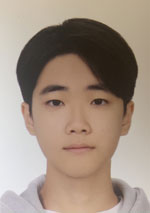![[A picture of an old lady and a clock. Photo Credit to PxHere]](https://cdn.heraldinsight.co.kr/news/photo/202307/3326_6776_421.jpg)
Elderly facilities replace daycare centers and kindergartens as Korean society increasingly transitions into an aging society.
In 2021, the Children's Eye-Level Day Center, which has served the children of Hwa-Sung since 2004, shut its doors and began remodeling.
A year later, the former daycare center transitioned into an elderly facility named 'The Best Senior Care Home.'
The facility's director, Yoo Hye-Ryun, claims the change was inevitable.
"The number of children at our former day care center declined year by year from 80 to 70, and from 70 to 60," she said.
"As such, about two years ago, I determined that my daycare center can no longer be sustained and that it should be replaced by a senior care home instead," she noted.
Director Yoo's experience was quite common among child center directors.
Many other daycare centers and kindergartens went through the same process.
According to an official announcement by National Assembly member Choi Hye-Young's councilor office, 81 child centers have transitioned into elderly facilities over the last five years.
Similarly, the Ministry of Health and Welfare's report revealed that from 2018 to 2021, the number of kindergartens nationwide declined by 15.1%, while elderly facilities increased by 10.1%.
These results are not a mere coincidence but rather indicators of Korea's ongoing demographic change toward an aging society with low fertility rates.
In 2021, a Korea Economic Research Institute report indicated that Korea has the highest average aging rate among all OECD nations, at 4.4% per year.
This number is double that of its neighboring aging country, Japan, and 70% higher than the corresponding OECD average.
As a result of this rapid aging rate, the elderly-to-population ratio in Korea has reached 17.5% by 2022, marking a 197% increase from 5.9% in 1995.
Alongside this aging trend, Korea's total fertility rate remains low.
Statistica Korea reported that Korea's total fertility rate last year was 0.78 children per woman, the lowest among all countries worldwide.
This concerning ratio is only about one-third of the minimum sustainable fertility rate of 2.1, which a society needs to refrain from population declines.
To add fuel to the fire, this fertility rate has been shown to decline over time.
In 2015, Korea's total fertility rate was 1.24 children per woman; however, by 2022, this ratio dropped to 0.78 children per woman, indicating a 37.1% contraction over only seven years.
On a similar note, from 2016 to 2022, Korea's total number of newborns declined from 406,000 to 249,000.
Overall, the coexistence of an aging trend and a low, waning fertility rate suggests that Korea's elderly population will grow while its younger population dwindles.
These demographic changes are perceived as problematic from the government's perspective, as they imply that fewer young people can contribute to tax revenue when more older people need social welfare and other funding.
In light of this concern, the Korean government has spent 322 trillion KRW on trying to revert the population trend since 2006.
However, little to no progress has been made, as seen by how an aging trend and a low fertility rate continue to exacerbate with time.
More child centers will have to close their doors in the coming years to remodel into elderly care facilities until the government comes up with fundamental and practical changes to alter the direction of demographic trends.

Hoseok (Chris) Ahn
Grade 12
Asia Pacific International School

